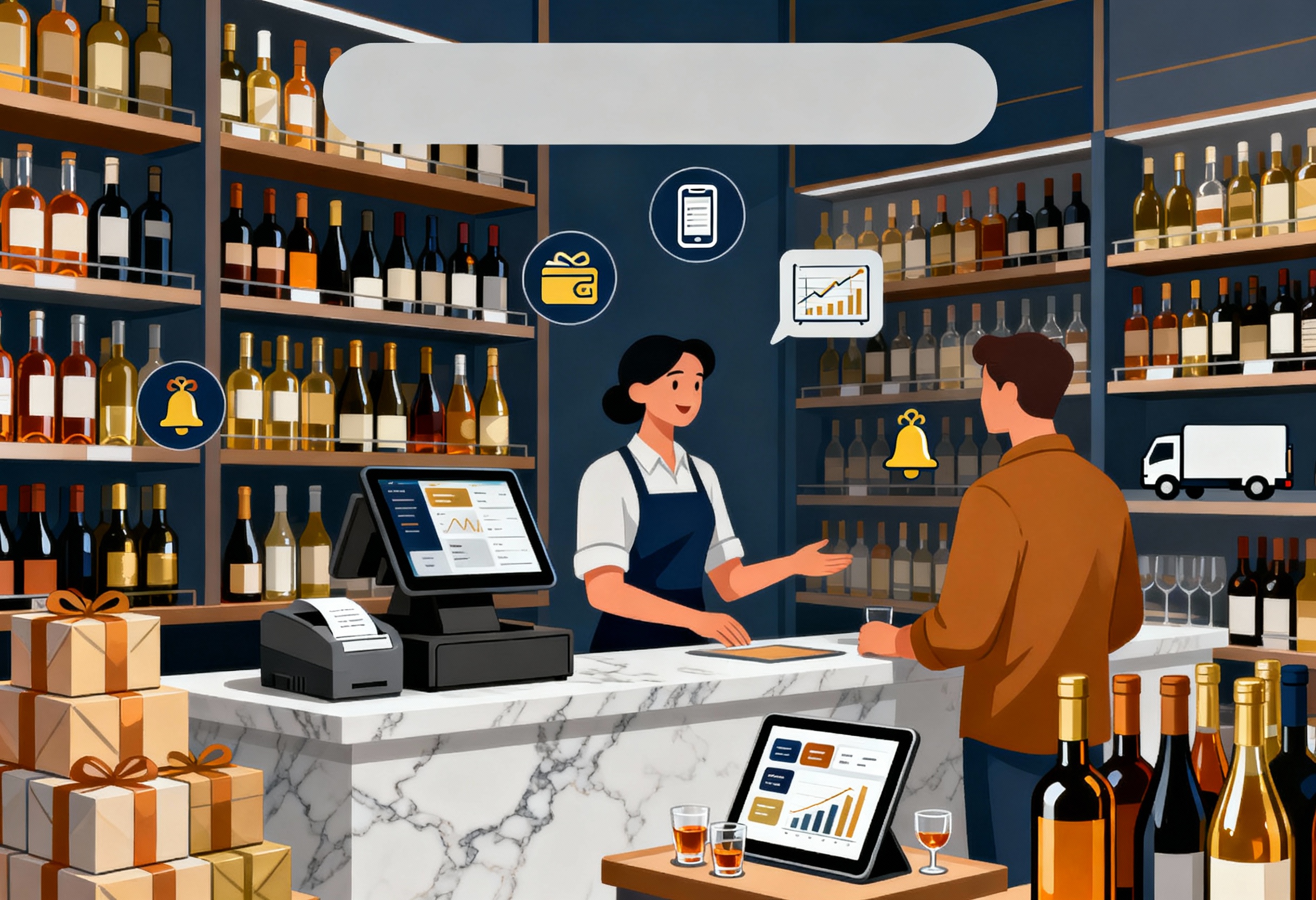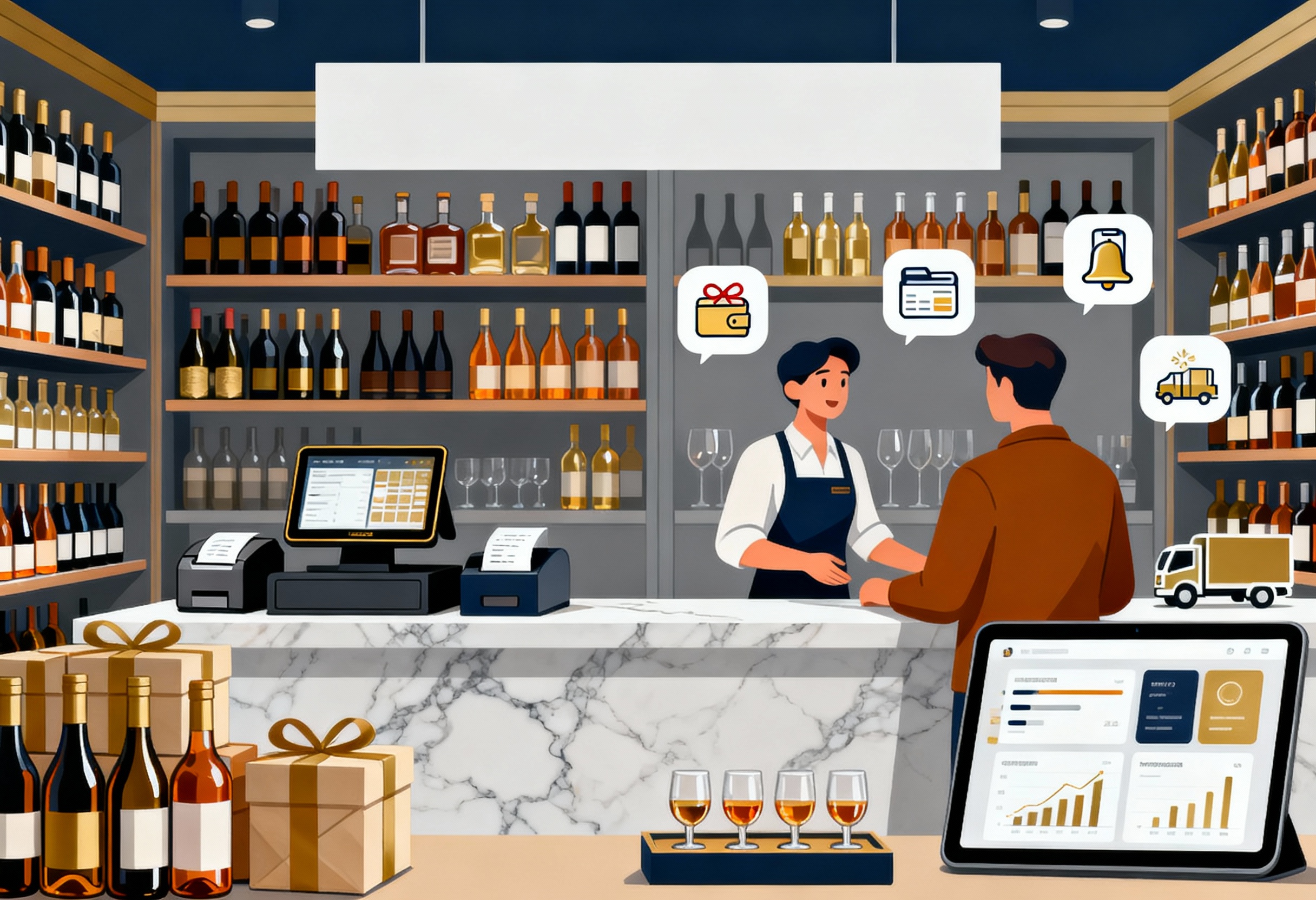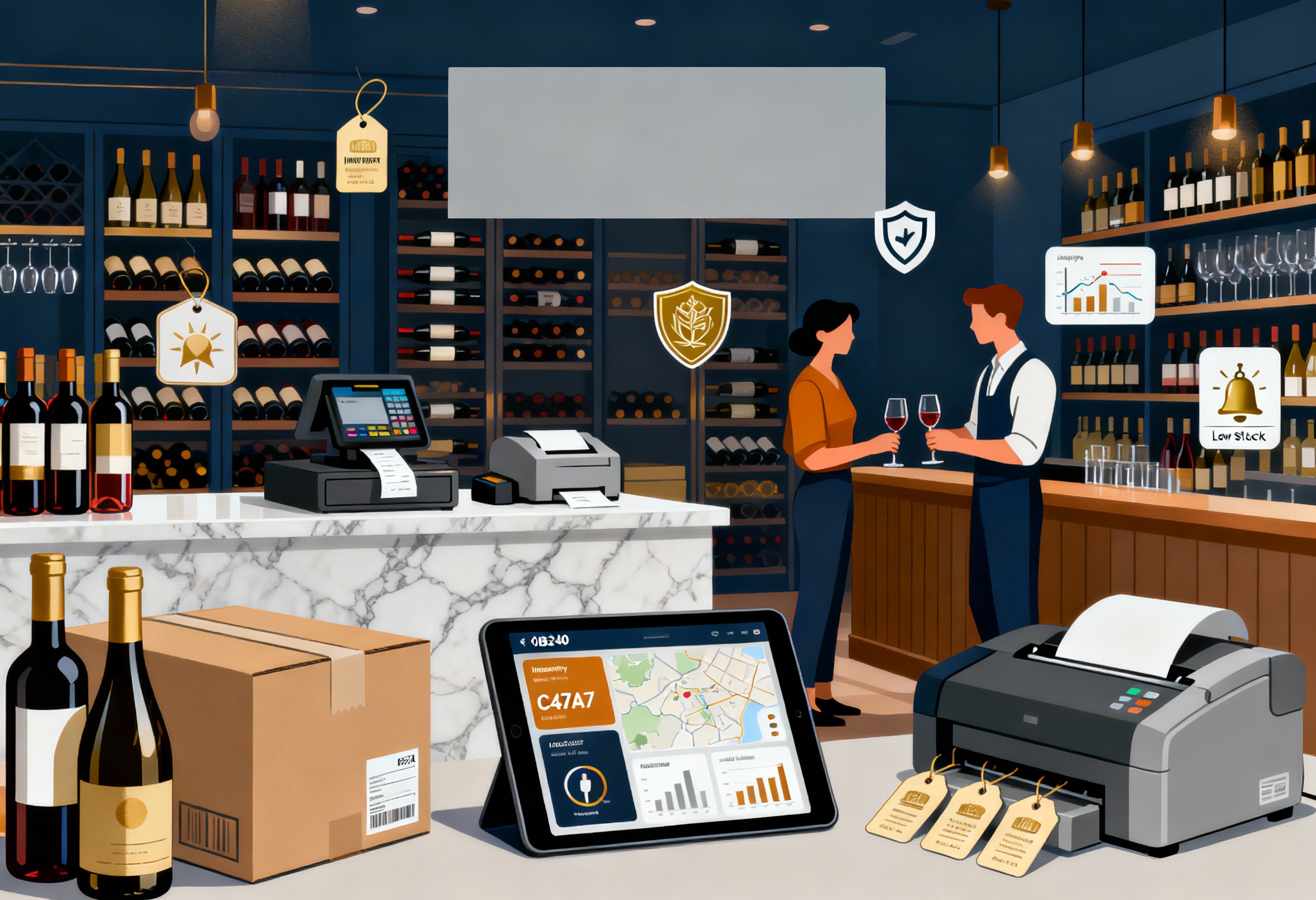Managing multiple stores can be complex, especially for sales tracking, inventory control, and real-time reporting. Businesses face fragmented data, lower productivity, and poor customer experiences without a unified POS system. A Salesforce Retail Study revealed that 68% of multi-location retailers struggle with disconnected systems. Implementing a POS multi store setup addresses this gap by bringing all locations under one integrated platform. This guide breaks down the most effective approach to rolling out a POS multi store system and highlights the features that support long-term success. Let’s get started.
Highlight:
- Proper implementation of a POS multi-store system centralizes inventory, sales, and customer data, reducing errors and boosting efficiency.
- Businesses with unified systems experience streamlined operations, better customer service, and real-time insights for smarter decisions.
What is a Multi Store POS system?
A POS multi store is a point-of-sale solution that manages multiple store locations from a single, centralized platform. It gives retailers clear visibility across all stores, covering inventory, sales, customer profiles, and team performance.
Instead of juggling separate systems, retail operators can keep pricing consistent, streamline stock transfers, and generate reports that reflect the full picture of their operations.
Take a beauty brand that runs three physical stores and one online shop. With a multi-store POS system in place, the brand can monitor product availability across all channels, move inventory quickly when one location runs low, and review combined sales metrics on demand. This setup supports better planning, avoids stockouts, and keeps the customer experience consistent.
Why Implementing a POS Multi Store Properly Matters
Any company running more than one retail site must properly implement a POS multi store if it is to expand and run as it should. When deployed correctly, the system brings your entire retail network together, making data, inventory, and sales accessible in one place.
But if the implementation is rushed or misaligned with store processes, it can lead to pricing inconsistencies, inventory errors, and operational delays.
Here’s why proper implementation matters:
- Centralized Control: Maintain uniform pricing, promotions, and product details across all sites.
- Inventory Accuracy: Track stock movement instantly to avoid overselling or carrying excess stock.
- Improved Customer Experience: Deliver the same level of service and seamless transactions at every touchpoint, which builds trust and encourages repeat visits.
- Data-Driven Decisions: Unified reporting tools give you access to real-time insights, helping you respond faster to trends and make decisions based on facts, not assumptions.
- Operational Efficiency: Automating tasks like price updates, reordering, and employee permissions reduces manual work and lowers the risk of errors.
- Scalability: A properly configured POS multi store system makes onboarding new store locations easier, helping you scale without major disruptions.
Rolling out a POS multi store strategy the right way sets the foundation for efficiency, consistency, and sustainable growth.
6 Essential Features of Multi-Store POS Systems
For retail businesses operating across multiple locations, a POS multi store acts as the command center for managing the entire business.
Let’s explore 6 essential features every modern multi-store POS should offer to assure efficiency, accuracy, and growth.
►►► Optimal solution set for businesses: Multi store POS, Next-gen POS, Inventory Management Software (MSI), Self Service, Automation, Backorders
- Cloud-Based Access from Anywhere: Cloud-based access gives managers and owners the flexibility to view and manage store performance from anywhere. Whether working remotely, traveling, or visiting a different location, you can log in securely to review sales reports, update product details, or monitor inventory in real time.
- One Platform to Manage All Locations: Managing multiple stores doesn’t have to mean juggling multiple systems. A strong POS multi store solution brings together inventory, sales, staffing, and customer data under one platform, streamlining processes and minimizing duplication. This level of control keeps operations consistent across all branches.
- Live Inventory Monitoring: Accurate inventory data prevents stockouts and overstock situations before they happen. With live tracking, managers can check current stock at each location, move items between stores, and receive alerts when levels dip too low.
- Visual Sales and Performance Insights: Each store performs differently, and visibility into those differences drives better business moves. POS multi store systems should present clear reports on top-selling items, staff performance, and seasonal trends, so retailers can act quickly and confidently.
- Unified Customer Relationship Tools: Providing personalized service across locations starts with consistent customer data. Built-in CRM tools store purchase history, loyalty points, and preferences, all visible across stores, making every interaction more relevant and rewarding.
- Direct Integration with E-commerce: Syncing POS with your online store keeps product availability, pricing, and order data consistent. This avoids mismatches, simplifies fulfillment, and supports a smoother experience for both online and in-person customers.
Steps to Implement a POS Multi Store System Successfully
A structured rollout of your POS multi store system sets the tone for performance, consistency, and long-term growth. Here’s how to approach it strategically, from planning to post-launch refinement.
Assess Operational Needs Across All Locations
Before choosing a POS multi store, evaluate how each store functions. Do all locations follow the same procedures? Are there differences in inventory size, staff skill levels, or peak business hours?
Differences in staffing, peak hours, or inventory volume will influence system requirements. Identifying shared and store-specific needs early on helps you prioritize the right features and avoid costly missteps later.
Choose a POS System Built for Multi-Store Management
Not all POS systems are equipped to handle multi-location setups.
Look for one that offers centralized control, real-time syncing, cloud access, and seamless integration with both e-commerce and third-party tools. Features like remote management, unified reporting, and cross-store inventory visibility are non-negotiable.
Standardize Data and Processes Before Migration
Before moving data into the new POS system, standardize product names, pricing, SKU formats, and customer data. Discrepancies between stores can create confusion and errors post-migration. Aligning your data across all branches ensures consistency and makes the transition to the new system smoother.
This is also the time to clean up outdated or duplicate information, which can slow down your system later.
Plan a Phased Rollout
Rolling out your POS system to all stores simultaneously can be risky. Instead, test the new system in one or two locations first. This phased approach allows you to identify and resolve issues in a controlled environment before expanding to the rest of your branches.
During this pilot phase, user feedback will be gathered, and the system settings will be fine-tuned to match real-world conditions.
Train Teams with Real Scenarios
Even the best POS system is only as effective as the team using it. Provide hands-on training that reflects actual day-to-day operations. Simulate tasks like processing returns, transferring inventory, and updating customer profiles. This practical approach helps employees feel confident and reduces the chances of errors during busy periods.
Ensure each location has a designated “POS champion” who can assist others and liaise with your IT or support team.
Set Up Real-Time Monitoring and Support
Post-implementation, continuous monitoring is key. Set up alerts for stock discrepancies, failed transactions, or unusual activity. Assign a support team, internal or external, that can respond quickly to technical issues or staff concerns.
Real-time monitoring tools not only catch problems early but also help maintain service continuity and customer satisfaction.
Track KPIs and Refine Continuously
Finally, use your new system to track key performance indicators (KPIs) across locations. Monitor metrics such as average transaction value, inventory turnover, customer retention, and staff performance. Use this data to make informed decisions, refine workflows, and implement best practices company-wide.
The POS system should evolve with your business needs, so schedule regular reviews to optimize functionality and address any new challenges.
ConnectPOS for Multi-store Businesses
ConnectPOS is built for retailers running multiple stores, giving them the tools to manage operations consistently across locations. Instead of juggling separate systems, businesses can bring sales, inventory, and customer data into one place, cutting down manual work and improving visibility store-wide.
- Real-Time Sync Across Stores: Transactions, inventory levels, and customer profiles update instantly across all connected locations and channels—keeping data consistent at every touchpoint.
- Central Inventory Oversight: Monitor stock levels by location, move products between stores when needed, and track stock availability without switching between systems.
- Consolidated Performance Tracking: View store-specific and chain-wide reports from one dashboard. Compare sales trends, identify best-selling items, and evaluate staff performance by branch.
- Shared Customer Information: Keep loyalty points, purchase history, and preferences available across all stores, so shoppers get the same experience no matter where they visit.
- Flexible Store Configuration: Set different pricing rules, promotions, or workflows by store while keeping control centralized. This works well for chains, franchises, or regionally managed branches.
- Direct Connection with E-commerce: Syncs with platforms like Magento, Shopify, and WooCommerce to unify product catalogs, orders, and inventory across online and offline stores.
- Role-Based Access Control: Assign user permissions by store or staff role to manage who can update settings, view reports, or access sensitive data.
FAQs: POS Multi Store
- What are the key security concerns with multi-store POS?
Key concerns include data breaches, unauthorized access, insecure network connections, and lack of encryption. Regular software updates and user access controls are essential to maintain system security.
- How can I track performance using my POS multi store?
You can monitor sales, inventory levels, and employee performance across locations through centralized dashboards and reports, enabling better decision-making and identifying top-performing stores or products.
- How can a POS multi store help in customer retention?
A multi-store POS enables unified loyalty programs, personalized promotions, and seamless shopping experiences across all locations, encouraging repeat visits and enhancing overall customer satisfaction.
Conclusion
Implementing a POS multi store system gives retailers clear control across locations. It brings inventory, sales, and customer data into one place, making daily operations more consistent and easier to manage. With the right setup, businesses can track performance in real time, reduce errors, and scale with fewer complications.
If you’re looking for a powerful and flexible system built for multi-location retail, ConnectPOS is your ideal partner. Ready to take your retail operations to the next level? Contact us today to explore how ConnectPOS can support your growth.
►►► Optimal solution set for businesses: Shopify POS, Magento POS, BigCommerce POS, WooCommerce POS, NetSuite POS, E-Commerce POS



